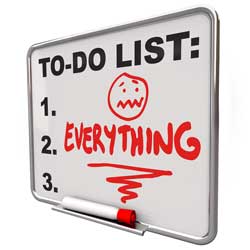 Our field of massage lives between two worlds. Historically, or at least over the last hundred years, massage was supposedly something that affluent people, primarily of the female gender, would allow themselves as a way of destressing and ‘getting away from it all. But massage is also increasingly recommended by doctors in situations where there is muscle injury, perhaps after a car accident or if there’s been surgery. So, luxury or legitimate treatment: which is it?
Our field of massage lives between two worlds. Historically, or at least over the last hundred years, massage was supposedly something that affluent people, primarily of the female gender, would allow themselves as a way of destressing and ‘getting away from it all. But massage is also increasingly recommended by doctors in situations where there is muscle injury, perhaps after a car accident or if there’s been surgery. So, luxury or legitimate treatment: which is it?
Sometimes, because I live in the world of massage and have embraced it so fully, I forget what the general perception is. When I am reminded, I’m always surprised how little the medical applications of massage are understood generally. So, for that reason I’m going to share them here—not because you don’t know them, but just as a reminder to continue to educate your clients.
Massage is, in addition to anything else, directly impactful to the musculoskeletal tissues of the body which include the muscles, ligaments, tendons, as well as the fascia that surrounds the muscle groups.
- In the case of a micro-trauma, where part of the muscle, tendon, or ligament is torn, commonly called a sprain or a strain, the muscles surrounding the area might be very tense, compensating for the injured tissue. You could use some friction to help elongate the compensating muscles back into shape.
- If there is a knot, you may find that trigger point work is super-useful.
- Chronic adhesions that are tough and feel ropey benefit from cross-fiber friction techniques. While those aren’t gentle or relaxing, they are effective. If there’s anything that’ll get your muscle restored to full action, good old cross-fiber friction will.
- Sometimes we use heat and ice, or hydrotherapy, and sometimes we’ll do stretches, either active or passive, and all of that is part of the work we do when we’re applying massage as a medical technique.
If I could, I’d like to make a clone of myself and go visit every surgeon in the country and ask them: “Did you operate on this person? Did your work create some scar tissue? Do you know that scar tissue can possibly be preventing full range of motion? Given how well it can improve outcomes, why haven’t you recommended massage to all your post-operative patients?” I know it sounds crazy, but that’s what I’d do. Why? Because massage is one of the absolute best methods for removing scar tissue and allowing patients a full recovery.

 As a massage therapist, one of the most important considerations is to keep your client comfortable and relaxed. An integral part of that is the temperature of the room. In the Pacific Northwest, I would venture to say that the majority of temperature issues are not that your client is too warm, but rather that they’d like to be warmer. Being warm, of course, has the additional benefit of relaxing your client, which in turn helps to relax their muscles.
As a massage therapist, one of the most important considerations is to keep your client comfortable and relaxed. An integral part of that is the temperature of the room. In the Pacific Northwest, I would venture to say that the majority of temperature issues are not that your client is too warm, but rather that they’d like to be warmer. Being warm, of course, has the additional benefit of relaxing your client, which in turn helps to relax their muscles. When I finished massage school, back in the early 2000’s, my classmates and I shared a lot of enthusiasm to graduate, start working, and build a successful practice. Similarly, today, a lot of people graduate hoping to build a private practice—for many obvious reasons. Let’s compare the realities of the pros and cons of private practice. On the plus side:
When I finished massage school, back in the early 2000’s, my classmates and I shared a lot of enthusiasm to graduate, start working, and build a successful practice. Similarly, today, a lot of people graduate hoping to build a private practice—for many obvious reasons. Let’s compare the realities of the pros and cons of private practice. On the plus side: One of the biggest obstacles that comes up when you’re trying to build a client base—whether working for someone else, or in your own private practice—is building the habit of simply asking clients to come back to see you. Just about every therapist knows that it is supposed to be good business practice, but the average therapist isn’t comfortable even asking a client to reschedule. They state that doing so feels “pushy” or “salesy.”
One of the biggest obstacles that comes up when you’re trying to build a client base—whether working for someone else, or in your own private practice—is building the habit of simply asking clients to come back to see you. Just about every therapist knows that it is supposed to be good business practice, but the average therapist isn’t comfortable even asking a client to reschedule. They state that doing so feels “pushy” or “salesy.” We therapists aren’t always marketing geniuses. Be that as it may, one of the major questions you have to ask yourself as a massage practitioner or center is: what do we specialize in? It is only then that you can find the right place—and the right customer—to market to.
We therapists aren’t always marketing geniuses. Be that as it may, one of the major questions you have to ask yourself as a massage practitioner or center is: what do we specialize in? It is only then that you can find the right place—and the right customer—to market to. Do you ever get asked to give massage when you’re at a party or other event? I suppose I’m a reasonably social person because I do, inevitably, find myself at some kind of a function or evening reception at least once a week, sometimes two to three times a week.
Do you ever get asked to give massage when you’re at a party or other event? I suppose I’m a reasonably social person because I do, inevitably, find myself at some kind of a function or evening reception at least once a week, sometimes two to three times a week. When I first started practicing massage, I enjoyed something of a meteoric success. My practice went from zero clients to fully busy within three months. I didn’t really think much about it back then, ten or twelve years ago, but these days, I get asked what I did, and so I thought I’d share.
When I first started practicing massage, I enjoyed something of a meteoric success. My practice went from zero clients to fully busy within three months. I didn’t really think much about it back then, ten or twelve years ago, but these days, I get asked what I did, and so I thought I’d share. What’d you have for lunch? Was it a burger? Lasagna? Perhaps it was a delicious taco—a spicy Mexican treat with lots and lots of delicious onions? Mmm… Sounds good, but that was your lunch break. Now, you’re about to see a client. Are they going to experience your fine, effective massage technique, or are they going to experience the fragrance of your recently consumed lunch? It’s all about context. Onions smell great at the dinner table, but not so good on the massage table.
What’d you have for lunch? Was it a burger? Lasagna? Perhaps it was a delicious taco—a spicy Mexican treat with lots and lots of delicious onions? Mmm… Sounds good, but that was your lunch break. Now, you’re about to see a client. Are they going to experience your fine, effective massage technique, or are they going to experience the fragrance of your recently consumed lunch? It’s all about context. Onions smell great at the dinner table, but not so good on the massage table. On occasion, I’ve run into licensed massage therapists who have experienced boredom with their massage practice and had decided to move on to a different career. I know this happens for some, but, for myself, I honestly can’t imagine ever getting bored with the practice of massage.
On occasion, I’ve run into licensed massage therapists who have experienced boredom with their massage practice and had decided to move on to a different career. I know this happens for some, but, for myself, I honestly can’t imagine ever getting bored with the practice of massage. With that introspective time of year right around the corner, your clients likely have their New Year’s Resolutions on their minds. Those resolutions can include everything from flossing more to working harder to seeing more of the world. New resolve to eat a healthier diet or to exercise regularly is somehow easier to summon as the calendar flips. As massage therapists, we’re in a unique position to support our clients in these efforts.
With that introspective time of year right around the corner, your clients likely have their New Year’s Resolutions on their minds. Those resolutions can include everything from flossing more to working harder to seeing more of the world. New resolve to eat a healthier diet or to exercise regularly is somehow easier to summon as the calendar flips. As massage therapists, we’re in a unique position to support our clients in these efforts.